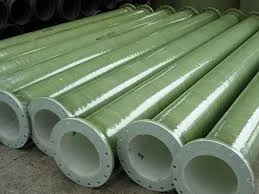
-
 Afrikaans
Afrikaans -
 Albanian
Albanian -
 Amharic
Amharic -
 Arabic
Arabic -
 Armenian
Armenian -
 Azerbaijani
Azerbaijani -
 Basque
Basque -
 Belarusian
Belarusian -
 Bengali
Bengali -
 Bosnian
Bosnian -
 Bulgarian
Bulgarian -
 Catalan
Catalan -
 Cebuano
Cebuano -
 China
China -
 China (Taiwan)
China (Taiwan) -
 Corsican
Corsican -
 Croatian
Croatian -
 Czech
Czech -
 Danish
Danish -
 Dutch
Dutch -
 English
English -
 Esperanto
Esperanto -
 Estonian
Estonian -
 Finnish
Finnish -
 French
French -
 Frisian
Frisian -
 Galician
Galician -
 Georgian
Georgian -
 German
German -
 Greek
Greek -
 Gujarati
Gujarati -
 Haitian Creole
Haitian Creole -
 hausa
hausa -
 hawaiian
hawaiian -
 Hebrew
Hebrew -
 Hindi
Hindi -
 Miao
Miao -
 Hungarian
Hungarian -
 Icelandic
Icelandic -
 igbo
igbo -
 Indonesian
Indonesian -
 irish
irish -
 Italian
Italian -
 Japanese
Japanese -
 Javanese
Javanese -
 Kannada
Kannada -
 kazakh
kazakh -
 Khmer
Khmer -
 Rwandese
Rwandese -
 Korean
Korean -
 Kurdish
Kurdish -
 Kyrgyz
Kyrgyz -
 Lao
Lao -
 Latin
Latin -
 Latvian
Latvian -
 Lithuanian
Lithuanian -
 Luxembourgish
Luxembourgish -
 Macedonian
Macedonian -
 Malgashi
Malgashi -
 Malay
Malay -
 Malayalam
Malayalam -
 Maltese
Maltese -
 Maori
Maori -
 Marathi
Marathi -
 Mongolian
Mongolian -
 Myanmar
Myanmar -
 Nepali
Nepali -
 Norwegian
Norwegian -
 Norwegian
Norwegian -
 Occitan
Occitan -
 Pashto
Pashto -
 Persian
Persian -
 Polish
Polish -
 Portuguese
Portuguese -
 Punjabi
Punjabi -
 Romanian
Romanian -
 Russian
Russian -
 Samoan
Samoan -
 Scottish Gaelic
Scottish Gaelic -
 Serbian
Serbian -
 Sesotho
Sesotho -
 Shona
Shona -
 Sindhi
Sindhi -
 Sinhala
Sinhala -
 Slovak
Slovak -
 Slovenian
Slovenian -
 Somali
Somali -
 Spanish
Spanish -
 Sundanese
Sundanese -
 Swahili
Swahili -
 Swedish
Swedish -
 Tagalog
Tagalog -
 Tajik
Tajik -
 Tamil
Tamil -
 Tatar
Tatar -
 Telugu
Telugu -
 Thai
Thai -
 Turkish
Turkish -
 Turkmen
Turkmen -
 Ukrainian
Ukrainian -
 Urdu
Urdu -
 Uighur
Uighur -
 Uzbek
Uzbek -
 Vietnamese
Vietnamese -
 Welsh
Welsh -
 Bantu
Bantu -
 Yiddish
Yiddish -
 Yoruba
Yoruba -
 Zulu
Zulu
frp launder
Understanding FRP Launders A Comprehensive Overview
In the realm of industrial processes, efficient material handling and management systems are crucial for ensuring maximum productivity and minimum waste. One such system that has gained prominence is the use of FRP (Fiberglass Reinforced Plastic) launders. These specialized conduits play a significant role in various industries, particularly in water treatment, mineral processing, and chemical manufacturing. This article delves into the properties, benefits, applications, and considerations associated with FRP launders.
What are FRP Launders?
FRP launders are channels or troughs made from fiberglass reinforced plastic. The composite nature of FRP provides a lightweight yet highly durable alternative to traditional materials such as concrete or metal. The fiberglass component offers excellent corrosion resistance, making FRP launders particularly suitable for environments with aggressive chemicals or moisture. In addition, they possess high strength-to-weight ratios, which simplifies transportation and installation.
Advantages of FRP Launders
1. Corrosion Resistance One of the most significant advantages of FRP launders is their ability to withstand harsh chemical environments. Unlike metal, which can rust or corrode over time, FRP materials can endure exposure to acids, bases, and salts without compromising structural integrity.
2. Lightweight The lightweight nature of FRP allows for easier installation compared to heavier options. This not only reduces labor costs but also minimizes the need for heavy lifting equipment, which can lower project expenses.
3. Low Maintenance FRP launders require minimal maintenance due to their durable nature. This is advantageous in reducing operational costs and downtime, allowing facilities to focus on their core activities rather than ongoing repairs.
4. Customizability FRP can be molded into various shapes and sizes to suit specific applications. This flexibility enables the design of launders that perfectly fit the requirements of different processes.
5. Cost-Effective While the initial investment might be higher than some alternatives, the long-term savings associated with maintenance and replacements make FRP launders an economically viable choice.
frp launder

Applications of FRP Launders
FRP launders are widely utilized across various sectors. Some prominent applications include
- Water Treatment In municipal and industrial water treatment plants, FRP launders are employed to transport sediment, chemicals, and treated water. Their resistance to corrosion ensures longevity in systems handling highly corrosive water.
- Mineral Processing The mining industry benefits from FRP launders in the transportation of slurries containing minerals. Their ability to withstand abrasive materials ensures durability under harsh operating conditions.
- Chemical Manufacturing The chemical industry utilizes FRP launders to handle various acidic or basic substances safely, minimizing the risk of leaks and spills.
Considerations for Implementation
While FRP launders offer numerous benefits, there are certain considerations that need addressing before implementation. The choice of resin and fiberglass material should align with the specific chemicals and environmental conditions they will encounter. Additionally, proper installation is critical to ensure optimal performance and longevity. Engaging experienced professionals during the design and installation phases is essential to maximize the advantages of FRP launders.
Conclusion
FRP launders represent a modern, efficient solution for transporting liquids and slurries across various industrial applications. Their unique properties combine to provide a durable, lightweight, and corrosion-resistant alternative to traditional materials. As industries continue to seek innovative ways to enhance efficiency while maintaining safety, the adoption of FRP launders is likely to grow, offering a promising pathway towards sustainable industrial practices. Understanding the intricacies of FRP launders is crucial for stakeholders aiming to optimize their operations and reduce environmental impact.









